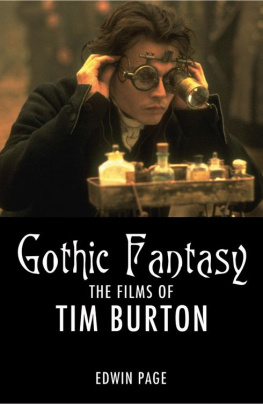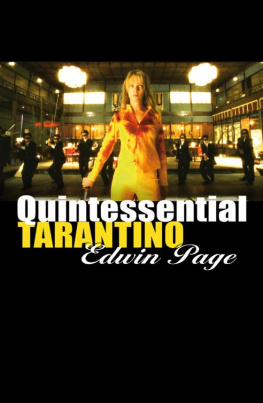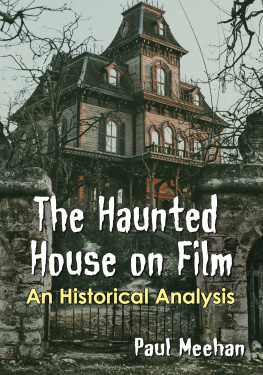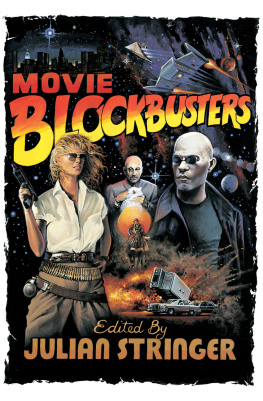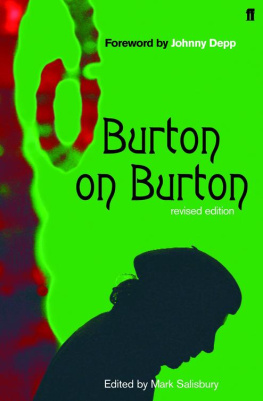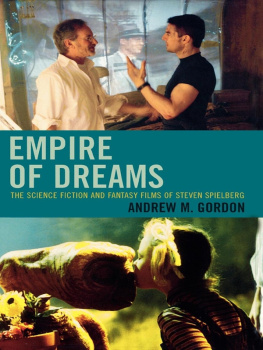After being immersed in the work of Tim Burton for a while things can get a little strange. You see movement in the shadows and when you turn to look theres nothing there. Life feels slightly unreal. Theres a sense of the mysterious hanging in the air like the fog in his film Sleepy Hollow. You see things in a different light.
When watching the stylised movies that have made Tim Burton a household name, it is easy to see why they can have such a profound effect. They are like fairytales, communicating to us on a symbolic level, speaking of things far deeper within our conscious and subconscious minds than most films would dare to delve.
Issues of alienation, insanity and a wish for acceptance are among those raised in expressionistic and gothic surroundings. The films explore life and death, tackling fundamental moral questions that stem from the balance of dark and light within each of us. Most importantly, they have the power to connect with us on a personal level, a power gained from the fact that Burton invests so much of himself into each movie that he works on. There is a humanity present that can reach out from the screen and touch us in a way that isnt possible with the run-of-the-mill Hollywood movies, which are so often devoid of such a personal touch, communicating only on a level of pure entertainment.
This is not to say that Tim Burtons work isnt entertaining, it is and often very much so but his work transcends this basic function of film. Burton is one of the few filmmakers who retains both integrity and passion, he wont agree to do a film unless he feels a personal connection with it which is fortunate for his audience who can reap the benefits of this absolute commitment.
Burtons films arent so much about the plot as they are about creating a mood, conveying emotion and communicating through the use of symbolism. This is why they resonate so strongly with such a wide audience. They talk to us individually about what it is to be human. They take us on an emotional journey: from the laughter of Beetlejuice to the tears of Big Fish, from the bittersweet fairytale of Edward Scissorhands to the heart warming story of Charlieand the Chocolate Factory, from the horror of Sleepy Hollow to the vibrant playfulness of Mars Attacks!, and from the brooding darkness of Batman to the hopeful naivety of The Nightmare Before Christmas.
During the course of this book each of his major feature films will be examined and the trademarks evident within them will be identified. The extent of his personal involvement will become clear, as well as other characteristic Burton traits such as his recurring collaborations with various actors and crew members.
I started writing the book as a fan and have ended it as a devotee who marvels at the depth of imagery created by one of modern cinemas truly great directors. So, let the journey begin. Read on and explore the unique cinematic experience of the films of Tim Burton.
Tim Burton is a tall man usually dressed in black. His dark hair is often wild and unruly, Johnny Depp stating that a comb with legs would have outrun Jesse Owens given one look at this guys locks. All his films have been affected by his childhood experiences, experiences which still have a strong resonance with Tim Burton the man. This personal touch has meant that his movies communicate a deep sense of humanity to those that see beyond the stunning visuals and often playful plotlines.
Born on 25th August 1958, Timothy William Burton spent the first ten years of his life living with his parents and younger brother in Burbank, California. Burbank is the location of a number of film and television studios, including Disney, NBC and Warner Brothers, so even as a boy he was close to the industry he would eventually become part of.
He couldnt understand why his parents sent him to Sunday school when they werent really religious or why they had a certain picture hanging on their lounge wall despite the fact they didnt seem to have any real feelings for it. He also couldnt understand why they blocked up the windows of his bedroom, leaving only high slits for the light to shine through. So, distanced from his parents and younger brother due to his perceived difference, Burton moved in with his grandmother at the age of ten and remained with her until leaving high school.
He saw the suburban life as lacking in passion, as a kind of colourless, flat landscape in which no one really knew anyone else beneath the faade of normality. He has said of his experience of living in suburbia that there was no passion for anything, just a quiet, kind of floaty kind of semi-oppressive blank palette that youre living in.
In order to escape these oppressive feelings Burton would indulge in creative and quite ingenious pranks. At one time, with the help of some other children, he distributed debris and stamped footprints around a local park, and then persuaded other kids that aliens had crash-landed there. He also faked fights in the neighbourhood and once convinced another child that a killer had died after falling into a swimming pool, their body having dissolved due to the fact that the pool had recently been cleaned with chloride (the tall tale was supported by some clothes hed thrown into the water).
Due to his suburban upbringing, Burton developed the belief that society tries to suppress any creativity and passion an individual may feel, while at the same time a particular culture is enforced upon us, almost suffocating any creative urges we may possess. Because of this he says that individuals need a certain kind of strength and simplicity in order to break through the enforced, cultural framework. This strength and simplicity is exactly what Burton employed in his passion for drawing, a passion that continues to this day. It is also evident in his films on a visual level, making his movies highly identifiable.
In the same way his films are not trying to assimilate reality, but are highly symbolic and stylised in order to capture and convey the complexity of emotions within the narratives.
Burton finds drawing both satisfying and cathartic, claiming that, I think best when Im drawing.
Burton often uses his drawings to explain certain elements of his films to production designers, directors of photography and even the actors involved. For example, he has made sketches of Edward Scissorhands, the Penguin from Batman Returns and Ichabod Crane from Sleepy Hollow in order to show the kind of look he was seeking from the characters.
Ultimate Quote
Like most kids, I felt different I felt like a foreigner in my own neighbourhood and in my own country Tim Burton
Perhaps attributable to this tendency to work things out visually rather than verbally or through the written word, Burton also enjoys photography. He appreciates the fact that this visual element taps into your subconscious, explaining how, its a more real emotion than if I intellectualise it in
His boyhood pictures may not have been intended for show, but his films certainly are, reaching wide and often spellbound audiences. This provokes a strange reaction from their creator, who has claimed he is unable to bear watching his films in anything other than small parts until about three years after their release. For Burton, the process of filmmaking must be particularly harrowing, his movies are so very personal almost a reflection of his mind. It is hardly surprising that he is somewhat fearful of what he has displayed of himself in these films, what he has revealed to the global audience of millions. As I aim to emphasise, however, it is this very willingness to expose his interior world, and make himself vulnerable, that gives his films the impact and the lasting quality that they have.

